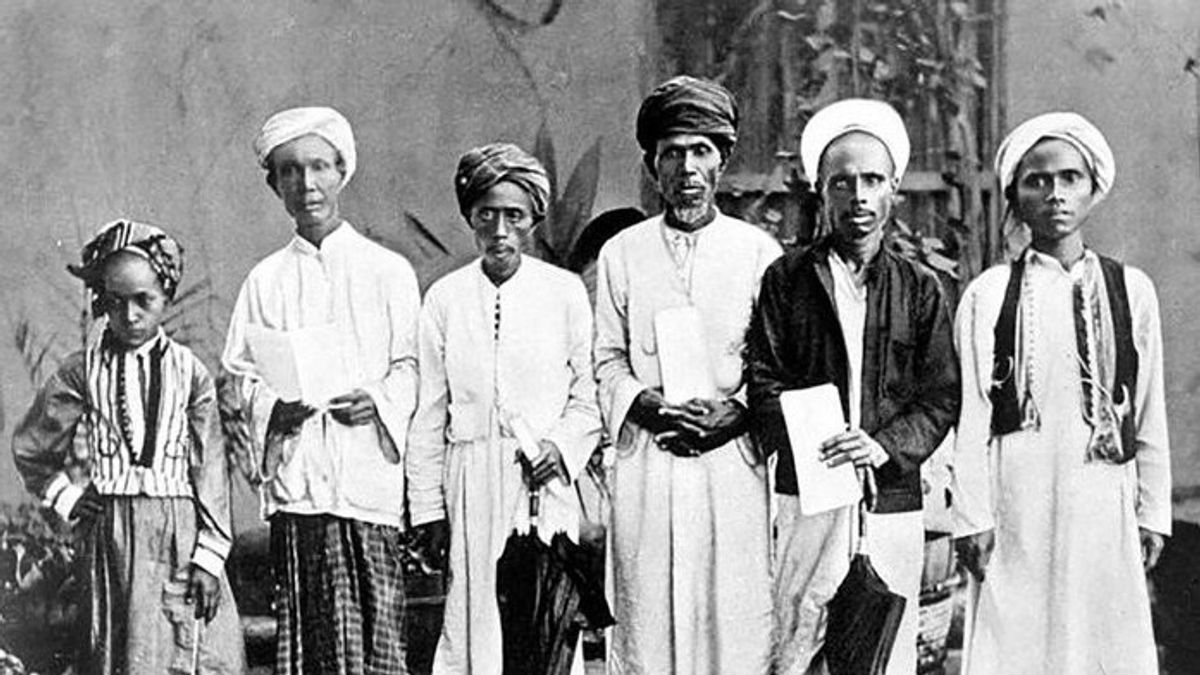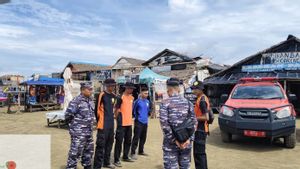JAKARTA - Hajj clothes or robes are one of the identities of Muslims in the archipelago. The popularity of the gamis has even existed since the Dutch colonial era. The robe at that time became a symbol of the 'archipelago' and resistance to the invaders.
The surge of resistance was evidenced by the large number of Islamic religious leaders – especially the hajj – leading the resistance in various parts of the archipelago. Dutch panic. Even anyone who wears a robe is suspected of going against the Dutch.
Initially, the pilgrimage for the bumiputras was a normal activity in the Dutch East Indies. The desire to get closer to God was even supported by the Dutch. Even because those who go on pilgrimage are only a limited circle.
The cost to fulfill the fifth pillar of Islam is too great. However, the number of people who dedicate money from their work to the pilgrimage is increasing.
The fruit, the unexpected happened. There were various kinds of revolt throughout the second half of the 19th century. Incidentally, many of them were spearheaded by Islamic religious leaders, including the hajjis.
The gesture was then kissed by the Governor General Herman Willem Daendels (1808-1811). The Dutch colonial government began to panic and then restricted the pilgrimage. The Dutch then considered the pilgrimage not only to be a religious affair, but to be a form of threat.

“Several regulations were made by the Dutch East Indies government in Batavia in matters of the Islamic religion: the issue of hajj, that the implementation of the pilgrimage in the 19th century could be called a 'hajj phobia.' In the political history of Hajj in Indonesia, Daendels was the first Dutch Governor-General to order Hajj pilgrims to use road passports, for reasons of security and order,” said Abdullah Idi in the book Political Ethnicity of the Dutch East Indies (2019).
The regulation was implemented by Daendels because of various concerns. The Dutch colonial government just realized the position of Hajj in the Indies society was so respected. There are many followers.
Moreover, experience in the past shows that many rebellions were spearheaded by the hajjis. Efforts to resist it emerged none other than because the pilgrims met with people from various parts of the world.
As a result, the insight of the pilgrims becomes wider, including much influenced by the spirit of Islamism. The same condition was recorded by the Lieutenant Governor of the Dutch East Indies, Thomas Stamford Raffles (1811-1816) when he was in power.
Raffles realized that the influence of the Hajj in fomenting the rebellion was enormous. A pilgrim can be transformed into an important figure in a region.

They are elders, also considered ideal leaders. Not infrequently the Hajj is called a savior from poverty and oppression in the style of the invaders.
“Every Arab from Mecca, like the Javanese who returned from their holy journey, thought that the Javanese had the character of a savior, and mostly had a tendency to easily understand things, even they sometimes had supernatural abilities. Based on this response, it was not difficult to arouse them to carry out a rebellion, and they became a dangerous tool in the hands of local authorities against the Dutch," wrote Thomas Stamford Raffles in his masterpiece The History of Java (1817).
“Islamic religious scholars are involved in various popular resistances. Some of them are of Arab descent with indigenous women, who have gone far from their territory in the Eastern islands, and generally this is because of intrigue and violence between them. Tribal chiefs have been used to attack or massacre Europeans as disbelievers and intruders," he added.
Robe symbol of the archipelago and resistanceDuring that period the Dutch colonial government issued a new regulation on Hajj in 1859. The regulation was contained in the Staatsblad dated July 6, 1859 No. 42 contains three main provisions regarding the pilgrimage.
First, a road passport remains mandatory and free. Second, the prospective hajj must prove to the regional head that he has sufficient money for his return and departure trips, as well as for the expenses of the family he left behind.
Third, after returning from Makkah the pilgrims are tested by the regent/regional head or appointed officer. After that, only those who pass are allowed to wear the title and hajj clothing (gamis).
As a result, the lasting robe has become a new dress culture among the bumiputras. The trend of robes for religious leaders is also part of the symbol of resistance to the invaders.
Because since the Dutch colonized, the natives are often prohibited from looking European-style. When the robe came in, the Arab clothing culture became more and more famous throughout the country. It was all thanks to the religious leaders who went on the pilgrimage and made the robe as mandatory clothing in the archipelago.
"One of the habits of the Dutch East Indies pilgrims is to wear hajj clothes (gamis) after performing the pilgrimage. Therefore, the funds for the hajj clothing have been prepared separately as can be seen in each calculation of the cost of the hajj trip. In 1931, for example, for Hajj clothing, about 75 guilders were prepared from the 823 guilders required by a pilgrim. At that time, hajj clothes were made and bought in Mecca,” said M. Salih Putuhena in the book Historiography of Indonesian Hajj (2007).
The tradition of wearing a robe brought by the pilgrims quickly spread. In addition to religious leaders, robes are also often used by Bumiputra officials – such as the regent – on certain days. The Regent of Bandung, Raden Aria Adipati Wiranatakoesoema V (1920-1931), for example.
On every occasion he meets his people, the regent of Bandung often wears a robe. After that, the Dutch colonial government considered the popularity of the regent who looked Islamic as a threat to the Dutch East Indies.
“According to the observations of his daughter, who accompanies the Bandung Regent, on visits to the countryside, her father seems very popular because he wants to talk and listen to his people. The emergence of this antipathy attitude was because his father's popularity in the eyes of the people could be seen as endangering the Dutch East Indies Government. However, the behavior of the Regent of Bandung has presented himself as an indigenous leader who is devoutly religious,” concluded Ading Kusdiana in the book History of Islamic Boarding Schools (2014).
*Read other information about HISTORY or read other interesting articles from Detha Arya Tifada.
Other MEMORIESThe English, Chinese, Japanese, Arabic, and French versions are automatically generated by the AI. So there may still be inaccuracies in translating, please always see Indonesian as our main language. (system supported by DigitalSiber.id)









